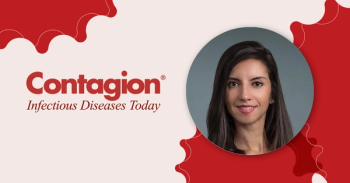
Antibiotic Stewardship in Small Hospitals: Overcoming Challenges
Edward J. Septimus, MD, explains how smaller hospitals can overcome the challenges that come with having fewer resources to implement a robust antibiotic stewardship program.
Edward J. Septimus, MD, professor, internal medicine at Texas A&M College of Medicine in Bryan, Texas, explains how smaller hospitals can overcome the challenges that come with having fewer resources to implement a robust antibiotic stewardship program.
Interview Transcript (slightly modified for readability):
Often small hospitals may not have an ID pharmacist and they may not have an ID physician. Therefore, they have to work within the confines of what’s available locally or they may have to consult externally to help them with their program. That can be done in a number of ways, such as through statewide programs. If they work in health systems, they can rely on the resources of the health care system, but ultimately execution occurs at the local level. Whether or not you have an ID pharmacist or an ID physician, you still need to have someone in clinical pharmacy and some physician champion, locally, that can help execute the recommendations if you have to outsource that kind of drug expertise.
Telemedicine is one way in which you can outsource where you can actually physically see a physician and you can actually see a patient. It’s a nice way to connect if you like to connect visually as well as by speaking, as opposed to just doing chart reviews electronically. And, some people find [telemedicine] to be much more engaging, than to have someone looking at chart reviews and having phone consultations.
It really depends on your setup what is available to you. I think the key is that if you don’t have the local drug expertise, there are ways in which you can get it. Whether it’s by telemedicine, or by other ways, the important thing is that we get the information down to the clinicians at the bedside, so that we can approve patient outcomes.
Just because you’re a small institution, it does not mean you shouldn’t have a stewardship program. We know from many studies that have been published that antimicrobial resistance is not limited to large referral hospitals; it’s also found in smaller institutions. And, so it’s everyone’s responsibility. I think the key issue is that we’re all in this, we’re all part of the solution—small hospitals, large hospitals—I think they’re all important.
[To build a stewardship program in] smaller hospitals you have to start off literally ‘small’ and try to build on that. [For example,] you can certainly have post prescriptive review where you have a 48- to 72-hour time out. You can target certain antibiotics, or, you may want to target every patient that’s been started on a new antibiotic. Look at what the site of infection is, look at what the pathogen is, and see if there’s an issue that you can de-escalate to a narrower spectrum antibiotic, or perhaps stop antibiotics if no infection has been identified. All institutions can do that.
You can also have restrictions if that’s possible, but sometimes it’s more difficult in a small hospital to have restrictions. You can look at days on a therapy, a consumption metric, or you can look at adherence to guidelines, and you can look at acceptance of recommendations from the stewardship team.
These are all things you can do, and you can, of course, look at cost. These are really things that all small hospitals can do.
Newsletter
Stay ahead of emerging infectious disease threats with expert insights and breaking research. Subscribe now to get updates delivered straight to your inbox.




















































































































































































































































































